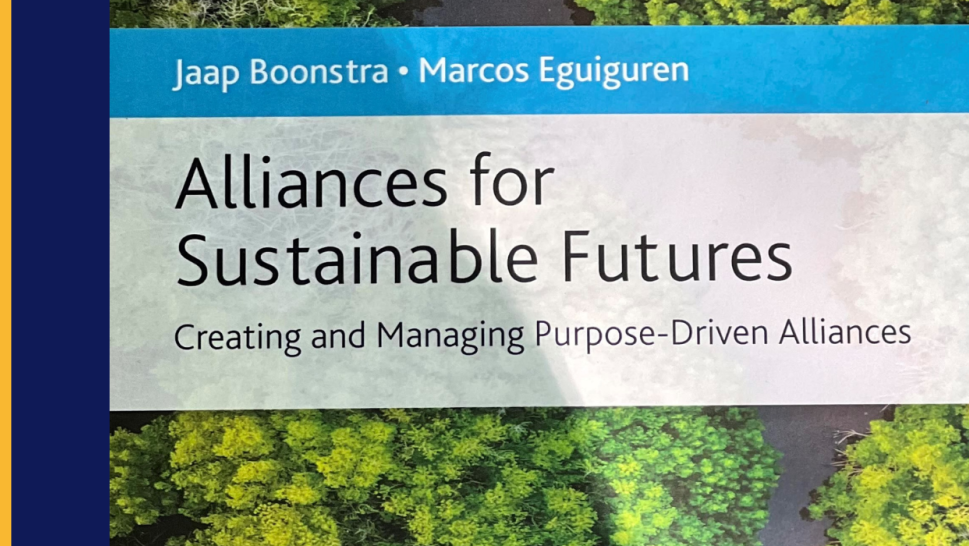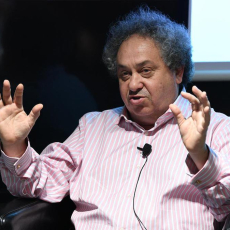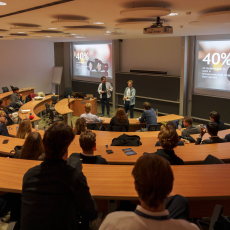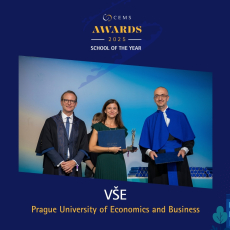Jaap Boonstra, is a professor of 'Organizational Dynamics and Leadership' at CEMS Member School, Esade Business School in Barcelona (Spain), and a professor of 'Organizational Change' at Rotterdam School of Management of the Erasmus university. The interview below describes Professor Jaap Boonstra's inspiration and enthusiasm for the CEMS Alliance.
What does inspiration mean to you? Why is CEMS an inspiring alliance?
Inspiration for me is being engaged with others in developing new ideas. This can be new ideas in teaching and learning, for supporting young professionals and leaders in who they are and want to be, and ideas to develop organizations in their life cycle. It is interring: inspiration usually origins from engagement and collaboration, and this is exactly what CEMS stands for.
The glue is the shared values. They have changed a little bit over the years but the main values from the start are still there. They are what keep the alliance together. It is so enjoyable to share ideas with students, to invent new ways of learning to see how it is possible to engage people, videos, exercises, and games, it never stops.
What impact has CEMS had on you?
The Global Leadership course I offer every year is one of the highlights of my work as a professor of Organizational Dynamics and as a consultant. The CEMS students are so engaged and motivated that it is a real joy to collaborate and explore the strategic issues of a selected organization or alliance. It helps me to understand the dynamics in collaborating organizations better and it is playful to develop new ideas for these organizations and help them to prepare for the future. This gives me energy and brings me new ideas. CEMS is values-driven and these values correspond with my own professional values, like empathy, tolerance, and respect. There is a deep connection to the level of these shared values.
Why have you chosen CEMS as a case study for your book?
CEMS is a fascinating and excellent example of a value-driven alliance of business schools, corporate and social partners with an already long history of 35 years. During this history, CEMS has been adaptive and agile, and able to reinvent herself repeatedly, while keeping her roots and strong identity. The original idea and values are still guiding principles, which is one reason the alliance is sustainable.
We need values-driven alliances in our dynamic and uncertain world. Only by collaboration between organizations can we solve global problems, like global warming, poverty, polarization between people and countries, inequality, and access to education for all. CEMS is an alliance that is able to contribute to a better world and the sustainable development goals of the United Nations. The CEMS history is a wonderful example for other organizations and alliances that want to take responsibility for the future of our world.

What are your most thought-provoking findings?
That people in alliances can make a difference in a Volatile, Uncertain, Complex, and Ambiguous (VUCA) world. All values-driven alliances, like CEMS and the GABV, start with the initiative of some people who want to make a difference. They find each other in a dream and start to work together. Based on this brilliant and attractive initiative other people and organizations want to join. This is how alliances can become global alliances with an impact on our world. But it begins with a spark. You can see a small stream that starts on a mountain, with other streams it becomes a river that ends up in an ocean full of life.
1. Studying more values-driven alliances we discovered that these alliances go through a life cycle with four stages: forming, building, developing, and evolving the alliance. People in alliances find each other, share a dream, visualize a mission and vision, and formulate guiding principles that direct action. These four stages are not linear stages in the alliance life cycle. It is a dynamic and continuous pattern full of paradoxes and tensions. Forming alliances is primarily about forming the alliance. At this stage, the foundations for the alliance are laid. It is the phase of getting to know each other and exploring possibilities to strengthen each other. While building the alliance is about expanding the alliance based on the initiative of the first members. This raises questions about appropriate forms of cooperation and the sharing of knowledge and experience. The third phase concerns the development of an alliance. The partnership will now focus on setting more ambitious goals and delivering results.
2. It is about bringing together ambitions and achieving a common goal. In this phase, visible results are important to continue to invest in collaboration. In the evolving phase, the alliance faces the challenge of continuing to innovate when results fail and adapting when the context changes and pressure increases. In time, the visible importance of the alliance may decrease, as will the will to continue to invest energy in it.
3. Identifying tensions is a precondition for successful cooperation in value-driven alliances. Twelve paradoxes help to handle the dynamics in the life stages of alliances. A paradox consists of two opposing perspectives that are each meaningful and defensible. The trick is to position yourself in the field of tension between the two perspectives and to continuously balance between the two extremes. A fundamental paradox is the tension between trust and control. Without trust, no cooperation is achieved, while control systems help to ensure that the trust that has been built up is not betrayed. Recognizing paradoxes in creating and developing alliances can help members in the alliance deal with problems, tensions, and strategic choices.
CEMS is about working hard and playing hard, could you tell us a bit more about that?
The perspective on play and playfulness in organizations I developed several years ago is based on my engagement in changing organizations and transformational change. Planned change and organizational development are still the dominant approaches to change in most organizations. These perspectives on change management were successful in the last century in a stable business environment. Now that many organizations are confronted with dynamic and turbulent business environments, these approaches are no longer suitable for such unpredictable circumstances. In an adaptive business environment, there is a need for adaptive change to prepare our organizations for the future. In my book Change as collaborative play I offer a perspective on organizational change as a collective search process in which players work and play together to organize, change and innovate. In this way, play provides a positive view of change in organizations as a collective learning and transformation process.
What are your hopes for the future of CEMS?
That the alliance contributes to preparing and educating young leaders and professionals who want to contribute to a better and more sustainable world and incorporate the CEMS values in their daily behavior of integrity, diversity, social responsibility, equality, and respect. When leaders with these values are willing to lead, we are able to create a wonderful future for all.




